More details behind the Taiwan Taoyuan Int'l Airport Terminal 3 winning proposals
By Bustler Editors|
Friday, Nov 13, 2015
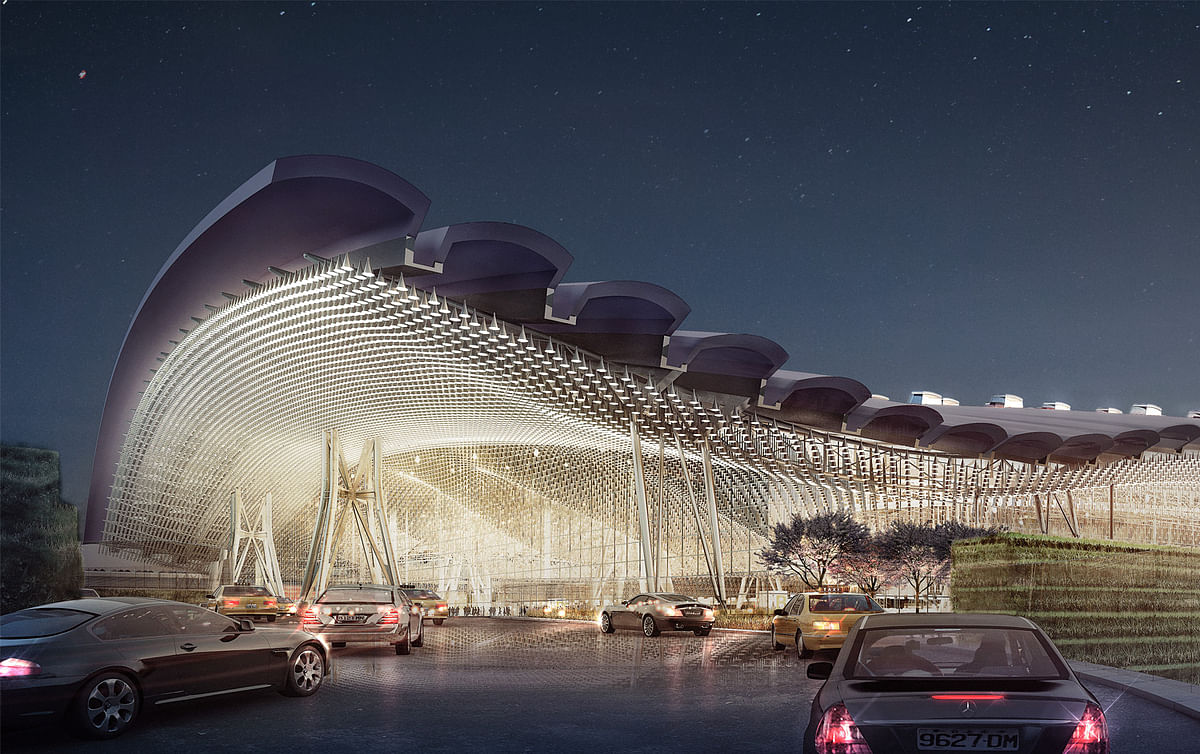
Related
The Taiwan Taoyuan International Airport, the country's largest airport, recently held a competition in search of the architect to design the new Terminal 3. The international team led by Rogers Stirk Harbour + Partners won the commission, while UNStudio's and Foster + Partners' teams were awarded with the second and third prizes, respectively.
Expected to accomodate 45 million travelers per year, the new T3 scheme includes a new terminal building, boarding gates, concourses and a multi-use building, and transportation infrastructure. With an estimated construction cost at a staggering NT$48.8 billion (approximately US$1.63 billion), the new terminal is slated for completion in 2020.
Check out the top three proposals below.
FIRST PRIZE: Rogers Stirk Harbour & Partners + Ove Arup and Partners Hong Kong Limited
"Design Concept:
- This terminal will be the first of a new generation, a highlight in the journey for new and seasoned travelers alike.
- It will offer arriving passengers an equality of spatial experience to those departing – a true gateway to Taiwan.
- It will offer an efficient, beautiful, spatial experience for all passengers, which prioritizes their health and wellbeing.
- It will be easily adaptable to meet constant change without compromising its spatial qualities. Its underlying concept is generated from this constraint.
- It is designed from the outset to recognize collective and individual priorities, such as allowing CIP and VIP passengers to fast track from curb to gate without compromising other passenger flows.
- Its rational plan arrangement is forecast to deliver minimum connection times of just 40 minutes, the best in the region, with simple way-finding and airside connectivity.
- It will accommodate airside retail that is benchmarked against the best in the world."

Baird & Associates Team

Baird & Associates Team
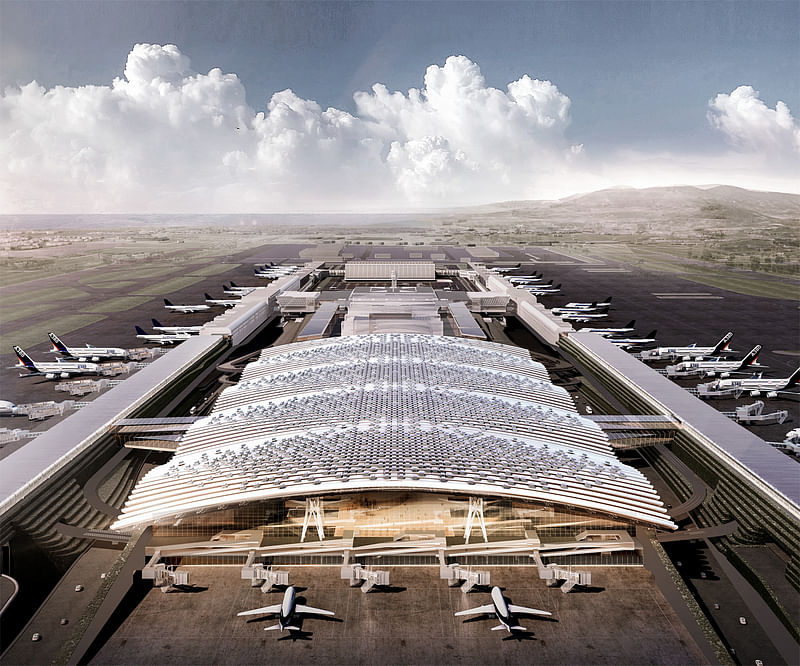
"Our proposal is inherently simple in its concept. We propose a terminal that comprises a hard well defined outer shell, formed to protect, and within it a soft inner surface that is malleable and dynamic to celebrate and form the ever changing spaces below. Adjust both the nature of spaces whether grand, intimate, uniform or dramatic and the extent of those spaces too. This flexibility ensures the airport is always at its best and suitably presented as the principal gateway to and from Taiwan to the rest of the world."
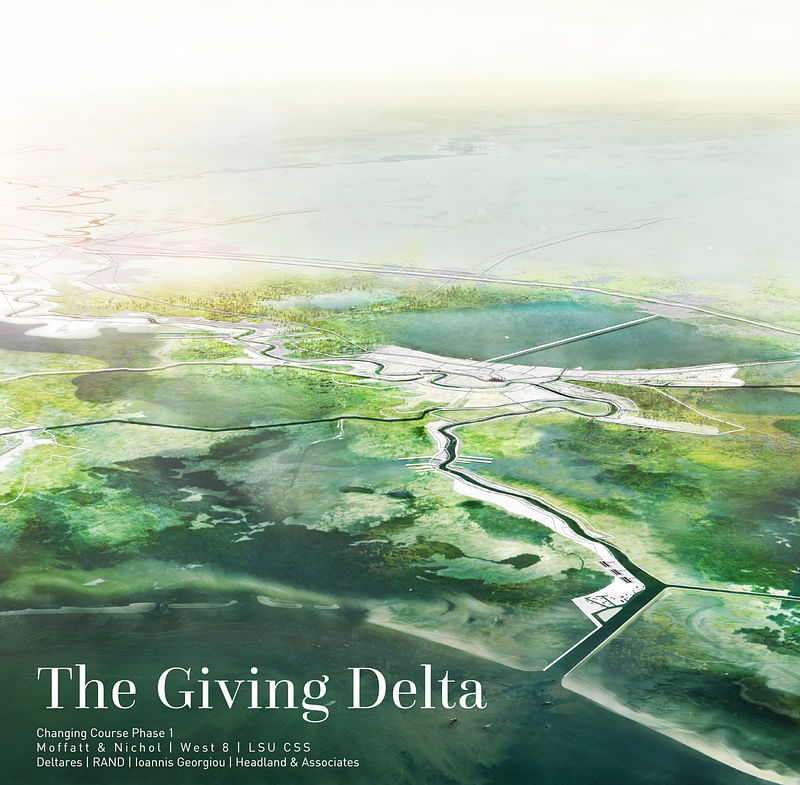
Moffatt & Nichol + West 8 + LSU-CSS

Moffatt & Nichol + West 8 + LSU-CSS
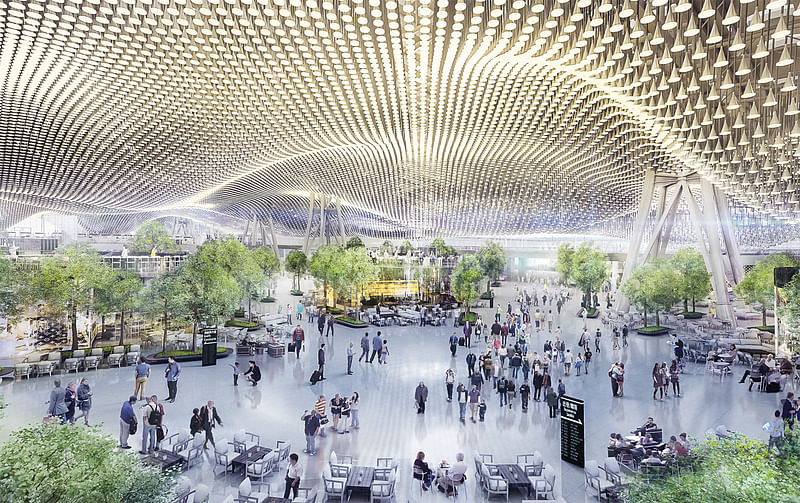
"First of the Next Generation of Airport Terminals:
Our proposal for Taoyuan T3 will be the first of a new generation that will respond directly to the passenger, making the process of using an airport less forbidding. If selected, this unique proposal will become a benchmark for the future, admired and copied around the world.
- Passenger focused
- Unique durable idea
- 'Hard shell, soft core'
- Super clear, quick and easy to use
- Catalyst to improve the whole airport and respect its heritage
- A city address for the MFB"
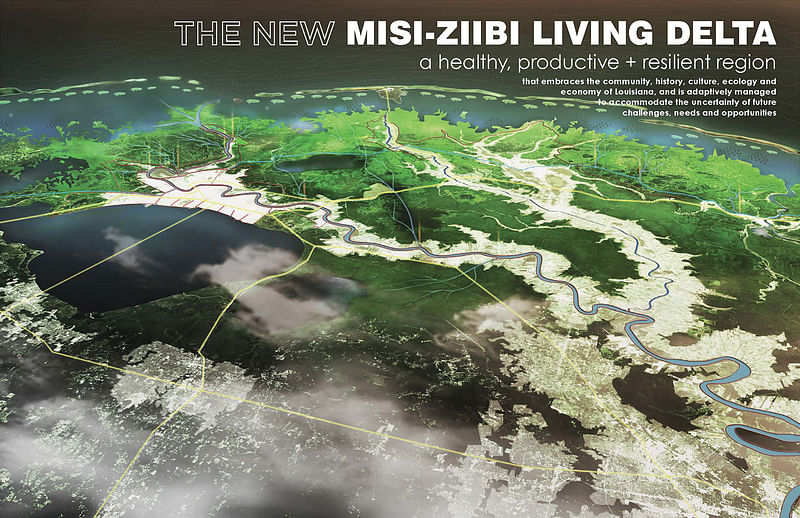
STUDIO MISI-ZIIBI Team
More images in the thumbnail gallery below.

STUDIO MISI-ZIIBI Team
More images in the thumbnail gallery below.
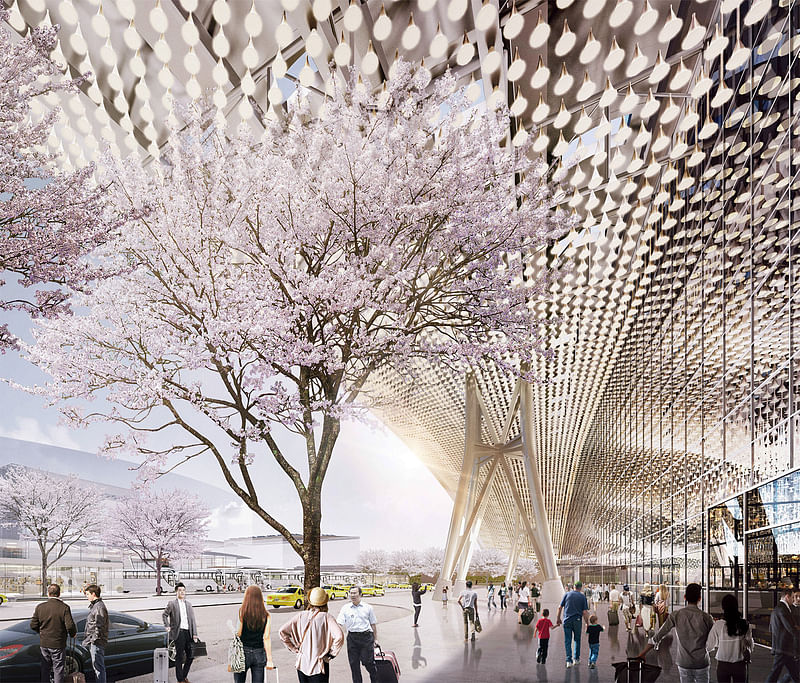
"The petals following the line of the hard exterior shell. The petals are designed to respond to the senses, visually and aurally. They are all identical, they are each the height of a person with upstretched arm and arranged on a consistent grid. They each comprise a brightly finished tube and cone which give them depth when seen obliquely and to reflect light from the skylights above. The lower surface of each has a warm reflective finish and is perforated which, with acoustic absorption within, controls sound absorption in the spaces. Each petal is suspended and tied to its neighbours with theatre wire to prevent excessive movement in earthquakes.
During the daytime, when the natural light is sufficient, sunlight is encouraged to penetrate and be refracted by the petals. The petals can be artificially lit from above with daylight balanced circadian lighting. Each petal has a small LED fitting, which can be controlled to highlight its warm underside. We imagine these could be programmed for many functions from forming large pixelated images, to adding colour for festivals and even to respond to the flow of passengers moving through the spaces below."
SECOND PRIZE: UNStudio + April Yang Design Studio Limited + MAA Group Consulting Engineers

"Place making at urban scale: The new Terminal 3 for Taoyuan airport is the new gateway for the Aerotropolis. With strong connections to Taipei through the MRT and vehicular traffic, the new Terminal 3 fosters strong connections to the new development area. Creating a closer proximity of terminal 3 to terminal 2 gives significant advantages when considering the terminals of Taoyuan Airport as an operational “hub” rather than segregated terminals. The main entrance of terminal 3 will become the most visually prominent facade for the Taoyuan Airport. As one arrives to T3, the roof transitions in a smoothly up-lifting opening up gesture designed to guide people at the curbside to the various entrances. This welcoming gesture is reinforced by the high level of transparency of the glass facades, enhancing the fluid connection between public spaces inside and out. Externally, the canopy reaches over the roadways to provide protection. The experience of the journey starts outside the terminal building!"

"Place making at building scale: In Terminal 3 we are building an environment: to create an architecture that is responsive to all environmental constraints, creating localised micro-climatic zones internally, and an outer and inner shell that work in concert with one another to ensure the optimum performance of all spaces. The building design is of integral nature. It benefits from a clear organization that provides passengers with high efficiency, while satisfying the need for physical convenience and comforts. The terminal building is characterized by short walking distances, minimal level changes and natural way-find ing through refined execution of orientation and daylight principles.
At the large scale, the architecture itself forms guiding elements – expressed prominently in the vertical structure connecting the MRT with arrival and departure levels, and the visual voids between departure and arrival levels. These important experiential moments and the building as a whole, is based on a rational and efficient grid system (9m base grid) that further differentiates the larger zones. Furthermore, prefabrication off site and assembly on site, efficient use of construction material and building load, all contribute to an effective implementation of the overall design strategy."

"Place making at interior scale: Our vision is to create an extended experience for the various users. The design speaks of ‘place making’ through the creation of a sequence of spaces that privilege comfort, ease of use and orientation. The cumulative effect of this is a pleasant environment that communicates our best wishes to the visitors. Natural wayfinding is an overarching principle for the internal organization of the spaces, supported by traditional way finding at key-locations. The different micro-climates are defined by physical conditions related to daylight, humidity, temperature and airflow corresponding to the predominant use of such zones. Localized uses are interchangeable and can include retail, recreation, relaxation, food & beverage, play and work; whereas the plants, media, art and Taiwanese culture constitute the integral components of these different zones. It is through this attentiveness across all scales that the project achieves a holistic design approach. The strategy of placemaking achieves the dual effect of appealing foremost to the end users - the people, and consequentially - to the various stakeholders in and around the airport business."

Our team has deliberately chosen to take the ‘unknown’ path. From the project inception, we have sought to conflate the spatial and functi onal experience of passengers. We have looked for an organizational model generated by principles of natural way-finding; creating an interior ecology that is entirely distinct from the look and feel of comparable airports. Through careful analysis of suc precedents, our design approach has sought to build upon and improve the organizational models of airport efficiency. Through this process, we have come to understand that the design for Terminal 3 is not just a building, but a project latent with potential for considering the Taoyuan airport as a hub. This attitude encompasses a desire to see all systems well integrated and aligned with each other, which will in turn allow the design for T3 to be perceived with increased significance - as it will be understood as a catalyst for the transformation of Taoyuan Airport."
THIRD PRIZE: Foster + Partners and Ricky Liu & Associates Architects+Planners

"Taiwan’s rich history and culture, and unique climatic conditions have all influenced the design of the terminal and the airport city. The awe inspiring and undulating backdrop of the Zhongyang Mountains, the majestic flight of the Taiwanese magpie together with traditional Taiwanese architectural forms all have inspired us for the iconic and distinctive sweeping wing roof form that will become a recognisable symbol and icon for the international gateway of Taiwan."
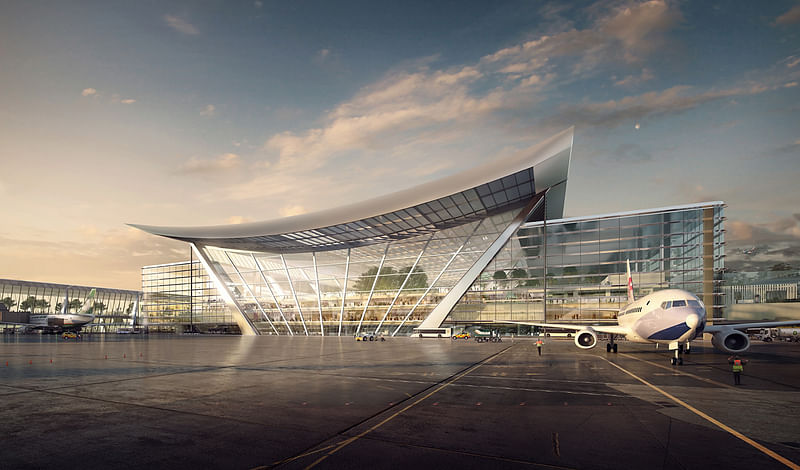
"The rich landscape of Taiwan with its magnificent central mountain range, diverse flora and fauna are celebrated in our concept design. A lush green garden spine is incorporated throughout with abundant indigenous plant species showcasing the variety of Taiwanese plantlife. This garden spine, arranged along the central axis intuitively guides passengers through check-in, security, immigration and departures."
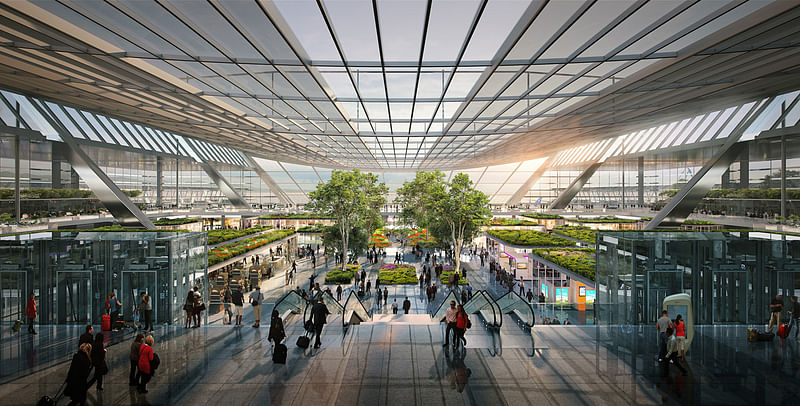
"It also creates unique, calm and relaxing spaces, the lush vegetation providing a welcome contrast to the harder finishes in the terminal. This reduces anxiety and stress normally associated with air travel, allowing passengers and visitors to connect with more natural and familiar surroundings. The choice of planting will represent the various places throughout Taiwan, informing and educating visitors the beautiful range of the indigenous landscape. The green garden spine will cover over 30,000sqm making it the greenest and the most exceptional airport in the world."

All images courtesy of Taiwan Taoyuan International Airport - Terminal 3 Design Competition.
See more images of each proposal in the thumbnail gallery below.

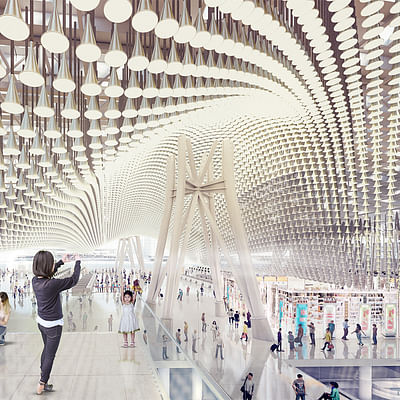
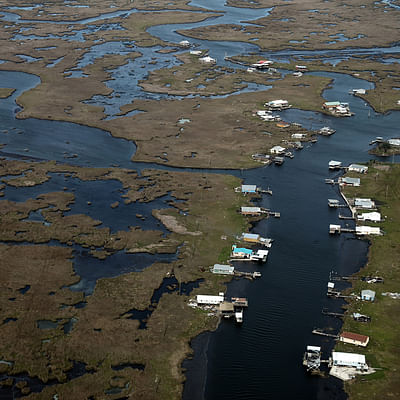

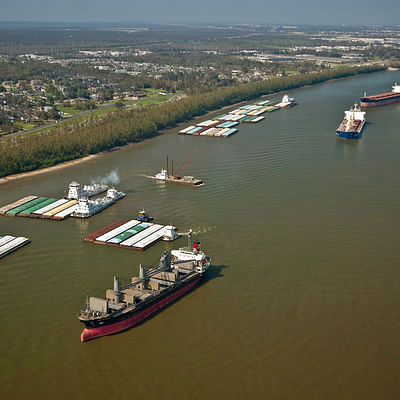
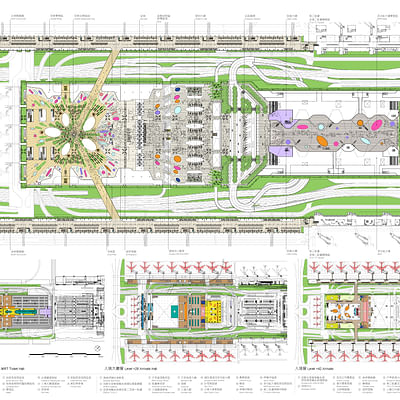


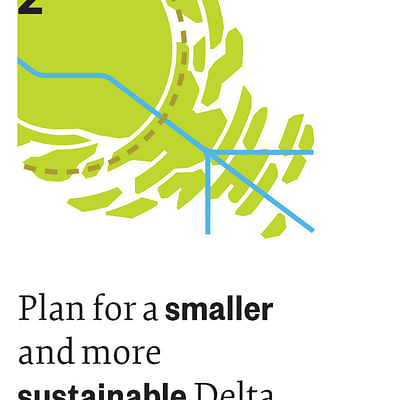
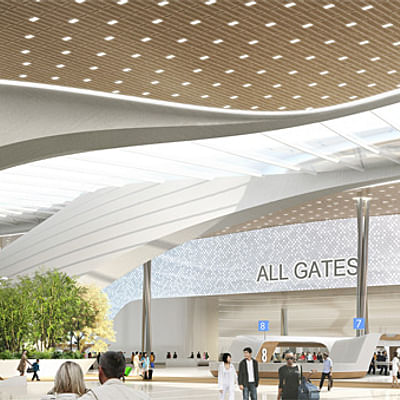

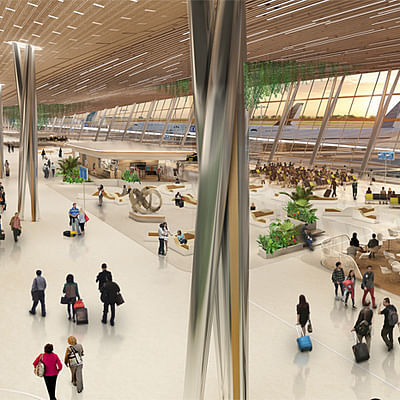

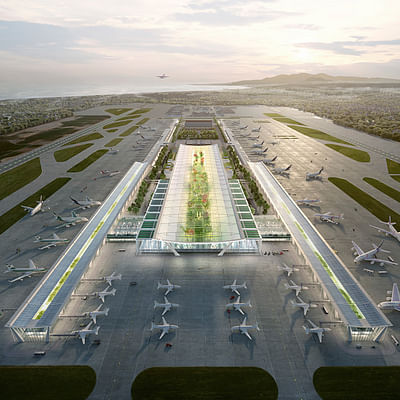
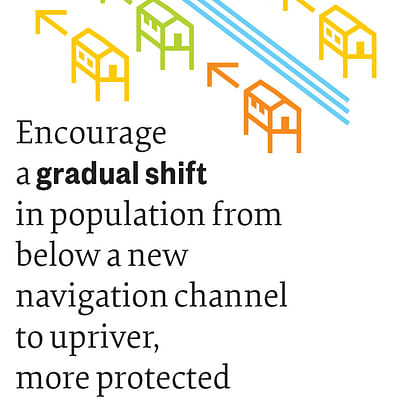
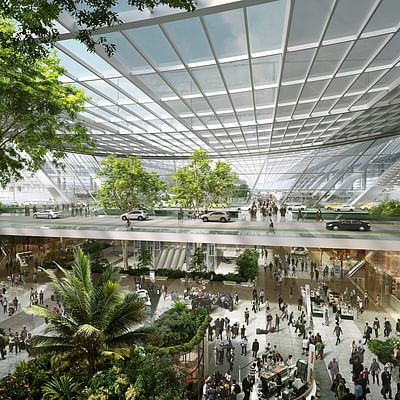
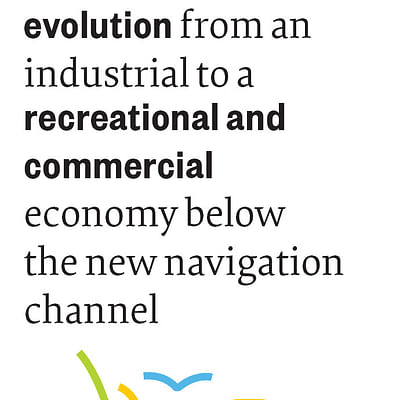
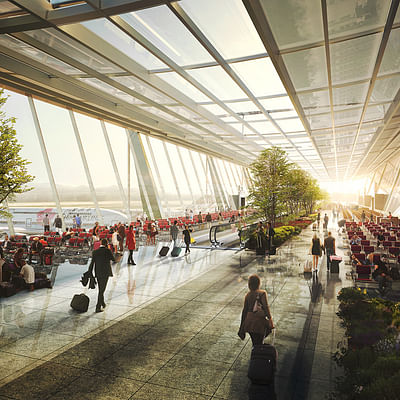
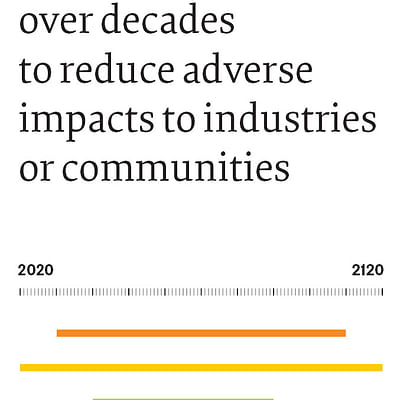
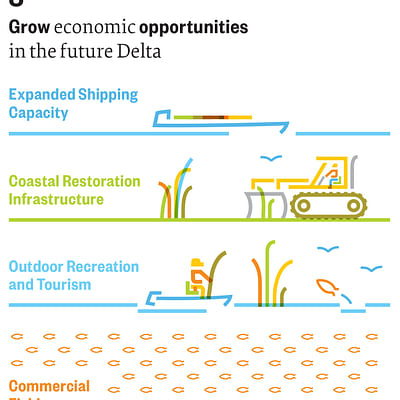

Share
0 Comments
Comment as :